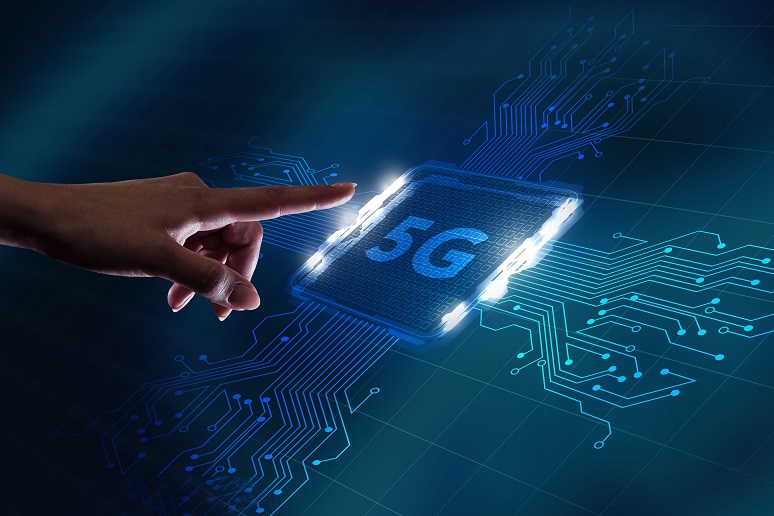The rate of communications technology innovation has only increased in recent years, and wireless providers have responded to demands for advancements by rolling out new smartphones, tablets, and other Internet of Things (IoT) devices. The advent of 3G and 4G wireless networks have made businesses more mobile and agile, and now, 5G promises even greater bandwidth and higher performing networks. 5G offers users faster, more reliable Internet, with lower latency issues for their employees, no matter where they live and work or what device they use.
Although still in the rollout stage in the U.S., 5G holds considerable promise, and many companies are already reaping its benefits. However, the transformation of mobile networks comes with risks that can’t be ignored. Redesigning mobile networks to enable greater efficiency, agility, and cost-effectiveness is enticing, but enterprises must also be aware of the potential security challenges that come with developing and implementing this infrastructure. With any new technology comes risk, and enterprises must be aware of potential 5G issues and be prepared to face them.
5G Brings New Security Risks
Security vulnerabilities in mobile networks aren’t new, but the number of attacks from different points is increasing as networks transform. Early adopters of 5G will likely experience security threats due to their implementation of an early-stage version of the network containing vulnerabilities that have yet to be discovered. 5G also presents visibility issues, increased exposure to attacks due to the addition of new network entry points, and increased risks from major dependencies on suppliers.
While some network experts might suggest that these risks are best mitigated by avoiding 5G entirely, I disagree. 5G is on its way to becoming the new standard for mobile data networks, and organizations need to focus on the bigger picture. Rather than fight the 5G revolution, what measures can organizations take to secure their networks and infrastructure as 5G-enabled devices become increasingly common? Most companies will need to rethink their security strategy for the inevitable implementation of 5G networks and assume that issues will occur.
Security Should Never Be an Afterthought
One of the most important elements of security for any organization is how quickly they can patch vulnerabilities while updating or upgrading the network. While most companies will test their network security during the implementation stage, they usually just verify that their network is secure from common, known risks, often overlooking the need to test interworking security.
Interworking security is the phase when security is integrated after the network update is implemented and live. This quick, low-cost deployment approach will get the network running, but it isn’t the right approach for 5G security. 5G networks will need to initially connect, communicate, and exchange data with 4G networks, and, as a result, we are likely to see major security risks arise from misconfigurations, poor network management, and security integrations between these networks.
Some early adopters will try to address 5G security risks with new solutions that weren’t designed for the new network or plug holes as they are identified after 5G is implemented. Unfortunately, this approach could do more harm than good. It could potentially create more network entry points for hackers to exploit. Instead of adding multiple, patchwork solutions to cover vulnerabilities caused by the 5G implementation, companies should evaluate the Secure Access Service Edge (SASE) model for complete network and security success for their new networks.
SASE is Key to 5G Security Success
As 5G networks enable organizations to distribute large amounts of data across their networks and infrastructures, the practice of sending all business data to one location will become problematic. Businesses will need to create a stronger edge network. Data must instead be sent to networks that are closer to the employee’s location rather than a centralized home office or corporate headquarters. A more powerful edge will allow that work to be done where it is needed most.
With greater adoption of security solutions and cloud-based tools in business environments, the amount of data being passed through the network will continue to grow dramatically. It will become correspondingly more difficult for IT and security teams to implement policies to defend against potential attacks on the network. For 5G networks, this is where SASE becomes particularly valuable.
SASE, a term
coined by Gartner in August 2019, is a network security model that combines different functions of network and security solutions into a unified cloud security platform to be delivered as a service. This approach was introduced at a perfect time for 5G networks: With these networks promising to expedite remote access to the business network from a distance, SASE helps companies install security at edge networks where employees are located. With SASE in place, we will see more secure 5G networks where security teams can automate security policy with a single management platform.
SASE Represents a Forward-Looking Security Model
By implementing the SASE model and its integrated services, adopters get an updated, secure 5G network, and complete cloud security strategy moving forward. With a security and network management platform implemented that is capable of matching 5G’s flexibility and speed, they will be ready to face the inevitable changes and challenges that accompany the widespread adoption of any new communications technology.











